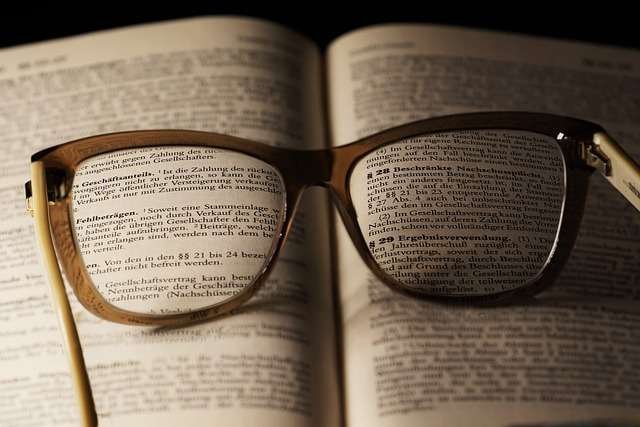What is a poem analysis?
Poem analysis is the process of critically examining a poem to understand its meaning, themes, literary devices, and artistic techniques used by the poet. It involves a close and thoughtful reading of the poem, going beyond its surface-level language to uncover deeper layers of significance and emotional impact.
Read also: Ode in poetry
Poem analysis can be approached in various ways, and there is no one-size-fits-all method. However, some common steps and aspects involved in poem analysis include:
- Reading and Re-reading: The first step in analyzing a poem is to read it attentively, absorbing its language and overall message. Poems often require multiple readings to grasp the nuances and complexities present within the verses.
- Understanding the Context: Learning about the poet’s background, historical era, and any relevant societal or cultural influences can provide valuable context for interpreting the poem. Context can shape the themes and meaning of the poem and provide insights into the poet’s intentions.
- Identifying Themes: Determining the central themes and subject matter of the poem is crucial in poem analysis. Themes are the underlying ideas or messages that the poet wishes to convey to the reader.
- Exploring Literary Devices: Poets use various literary devices to enhance the beauty and impact of their work. Analyzing poetic devices such as rhyme, meter, metaphor, simile, personification, imagery, alliteration, and symbolism helps in understanding the poet’s craft and the poem’s emotional resonance.
- Analyzing Tone and Mood: The tone of a poem refers to the poet’s attitude or emotional disposition towards the subject matter, while the mood is the emotional atmosphere conveyed to the reader. Identifying the tone and mood helps in connecting with the poet’s emotions and understanding the poem’s overall impact.
- Examining Structure and Form: Understanding the poem’s structure and form, including the arrangement of lines, stanzas, and verses, helps in appreciating its rhythm and flow. Different forms, such as sonnets, haikus, or free verse, can have a significant impact on the poem’s meaning and impact.
- Interpreting Symbols and Imagery: Poets often use symbols and imagery to represent abstract ideas or create vivid mental pictures. Analyzing these symbols and images helps uncover the poem’s deeper meanings and allegorical elements.
- Considering Personal Response: Poem analysis also involves reflecting on one’s personal response to the poem. How does it make you feel? Does it evoke any memories or associations? This subjective aspect of analysis adds depth to the overall understanding of the poem.
- Comparing with Other Works: In some cases, comparing the analyzed poem with other works by the same poet or with poems from different authors and periods can provide additional insights into the poem’s themes and style.

What is a poem analysis?
Overall, poem analysis is a rewarding exercise that allows readers to appreciate the artistry and thoughtfulness that goes into creating poetic masterpieces. It encourages readers to engage with the language, emotions, and ideas presented in the poem, fostering a deeper connection between the reader and the poet’s creative expression.
Literary devices in poem:
Poems are rich in literary devices, which are tools that poets use to create depth, beauty, and meaning in their works. These devices add complexity to the language, evoke emotions, and enhance the overall artistic impact of the poem. Here are some common literary devices found in poems:
- Rhyme: The repetition of similar sounds at the end of words, creating a musical effect. Rhyme schemes can vary (e.g., AABB, ABAB, ABBA) and contribute to the poem’s rhythm.
- Meter: The pattern of stressed and unstressed syllables in a line of poetry, which establishes the poem’s rhythmic structure. Common meters include iambic pentameter, trochaic tetrameter, and anapestic trimeter.
- Metaphor: A figure of speech that makes a comparison between two unrelated things, suggesting a resemblance. For example, “His smile was a ray of sunshine.”
- Simile: A figure of speech that compares two different things using “like” or “as.” For instance, “Her laughter was as melodious as a songbird’s.”
- Personification: Giving human qualities or characteristics to non-human entities, objects, or ideas. For example, “The wind whispered through the trees.”
- Imagery: Using descriptive language to create sensory experiences for the reader, appealing to the senses of sight, sound, taste, touch, and smell.
- Symbolism: The use of symbols to represent abstract ideas or concepts. Symbols can be objects, colors, animals, or anything else that carries deeper meaning.
- Alliteration: The repetition of consonant sounds at the beginning of words in close proximity, creating a pleasing sound and emphasizing specific words or phrases. For example, “Peter Piper picked a peck of pickled peppers.”
- Assonance: The repetition of vowel sounds within words in close proximity, adding a musical quality to the poem. For example, “The rain in Spain falls mainly on the plain.”
- Onomatopoeia: Words that phonetically imitate the sound they describe. For instance, “buzz,” “hiss,” or “clang.”
- Enjambment: The continuation of a sentence or phrase beyond the end of a line or stanza without a pause, carrying the thought seamlessly to the next line.
- Hyperbole: A deliberate exaggeration for emphasis or dramatic effect. For example, “I’ve told you a million times!”
- Irony: The use of words to convey a meaning that is opposite to their literal sense, often used to create humor or highlight contradictions.
- Allusion: A reference to a person, event, or work of literature, often meant to deepen the reader’s understanding or connect the poem to broader cultural contexts.
